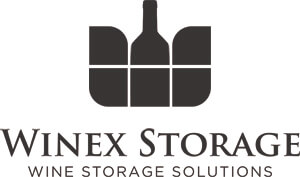Frankland River is one of the best kept Australian wine secrets. Inland Western Australia, 200km east of Margaret River, the Swinney Family with their sensational 2018 Farvie Syrah and Grenache look set to be an overnight success, 100 years in the making. Explore Langton’s portfolio of wines from Swinney.
From Jancis Robinson to Jeremy Oliver to Huon Hooke to Mike Bennie, the reviews of the 2018 Farvie Syrah and Grenache are beginning to approach consensus on the quality and uniqueness of the wines. These special bottles have charmed the wine media and shine a light on the sub-region of Frankland River–a place of soaring vinous potential.
The Swinney family have been farming in Frankland River for a century, but it wasn’t until 1997 they ventured into wine and planted their first vines. An inspired decision.

Mann-made–Winemaker Rob Mann
In the Hunter, there was Maurice O’Shea, in Barossa, Max Schubert, in Swan Valley—if not WA—there was Jack Mann. His White Burgundy for Houghton was a huge success for a half-century of vintages–winning major awards along the way. Made with Chenin Blanc, Jack was making skin contact white wines twenty years before the advent of hippies. And many years before hipsters ‘discovered’ this new way to make wine.
Jack Mann’s legacy went far beyond white wines. Houghton’s flagship Classified Cabernet is named in his honour. Jack’s grandson Rob is a sixth-generation winemaker. Rob has spent time at Hardy’s Tintara, Cape Mentelle—where he won a Winemaker of the Year gong—, LVMH’s Newton Vineyard in the Napa, and Corymbia wines. It’s fair to say, then, that Rob Mann has significant experience and deep vinous roots into which he can tap for inspiration. His Farvie wines are evidence he has done just that.
Rob’s philosophy—that great wine is made in the vineyard—is hardly unique and requires him to downplay his role somewhat. But this philosophy alone doesn’t make great wine. Fruit borne of lovingly tended vines nurtured in great terroir is still just fruit. From there the winemaker must make a myriad of good decisions to produce something special–to honour the fruit and the work of the growers (at Swinney, that’s Lee Haselgrove). The Swinney family—in appointing Rob Mann as senior in 2018—has found just the winemaker to do that.
Swinney Farvie Frankland River Grenache
The 2018 Swinney Farvie Frankland River Grenache has a touch (5%) of Mourvèdre. These bush vines are a particular passion for the Swinney family and care has been taken at every step to create a thoroughbred (Mike Bennie), stunning (Huon Hooke), gorgeous (Jancis Robinson), remarkable (Ray Jordan) Grand Cru level Grenache (Jeremy Oliver).

The fruit from the bush vine Grenache and Mourvèdre is hand-harvested. The berries—15% whole bunch Grenache and 5% Mourvèdre—are sorted and gravity-fed to a French oak vat. The fruit is co-fermented wild giving the resulting wine a firm but fine framework around which it builds textural profile. After a week and a half on skins, the wine is basket pressed directly into fine grained large format seasoned French oak to age for almost a year.
Swinney Farvie Frankland River Syrah
The 2018 Swinney Farvie Frankland River Syrah is, according to Jeremy Oliver in his 97-point review, ‘exemplary, in a textural Rhône-inspired style.’ Inspired, yes. But a facsimile, it isn’t. It’s Australian but uniquely so–it’s a Frankland River Syrah. It’s all there, savoury, floral, spice with a touch of smoke, red and black fruit, and fine firm tannins all impeccably balanced.
To achieve this, the grapes are hand-harvested from 1997 planted Syrah. The fruit—of which about half is whole bunch—is sorted, then gravity-fed into a vat and a brace of 600L demi-muids, all French oak. Wild fermentation follows and this is evidenced in the structure, complexity, and aromatic nature of the wine. There is a week and a half of time spent on skins after which the wine is basket pressed directly into large format French oak, about a third new. With just a pinch of sulphites, the unfined wine is given a little filter and is then ready for bottling.
Shiraz or Syrah?
In Australia, there are no rules governing or prescribing the use of the varietal descriptions Shiraz or Syrah. If the wine is made up of at least 85% of Shiraz, the producers can label the wine with either name.
For some, they see it as a way to make the wine sound a bit more French and sophisticated and even tack a few dollars onto the price (you won’t find these at Langton’s). However, for most the difference is stylistic. If it’s traditional Hunter Valley, it’ll be Shiraz. If it’s bombastic big Barossa, it’ll be Shiraz. If it’s a McLaren Vale monster, yep, you guessed it, it’s Shiraz.
For those labelled Syrah, however, their makers look towards the Rhône for inspiration. These producers lean towards making wines that are more elegant, savoury, aromatic and earthy and less fruit-forward. The number of wines made from Shiraz grown in cooler-climate regions being labelled Syrah should give a little hint.
The Farvie Syrah—and the Grenache for that matter—is Rhône-inspired. It’s got Australian fruit oomph but steps away from the level fruit sweetness of good Australian Shiraz. It’s not a slight wine by any means. It has ball gown elegance, excellently structured and very sophisticated, layer upon layer, it’s full but not heavy. It glides.
Rob Mann has made a blindingly good start to his tenure at Swinney. Beyond the show-stopping, game-changing Farvie releases, the Swinney portfolio is in great shape. We expect good things, indeed very good things, from Frankland River Riesling and Swinney delivers. Grenache, Shiraz, and an SMG blend are all very charming and a wonderful education in Franklin River wine.
https://www.langtons.com.au/news/farvie-by-swinney-game-changers-from-frankland-river

